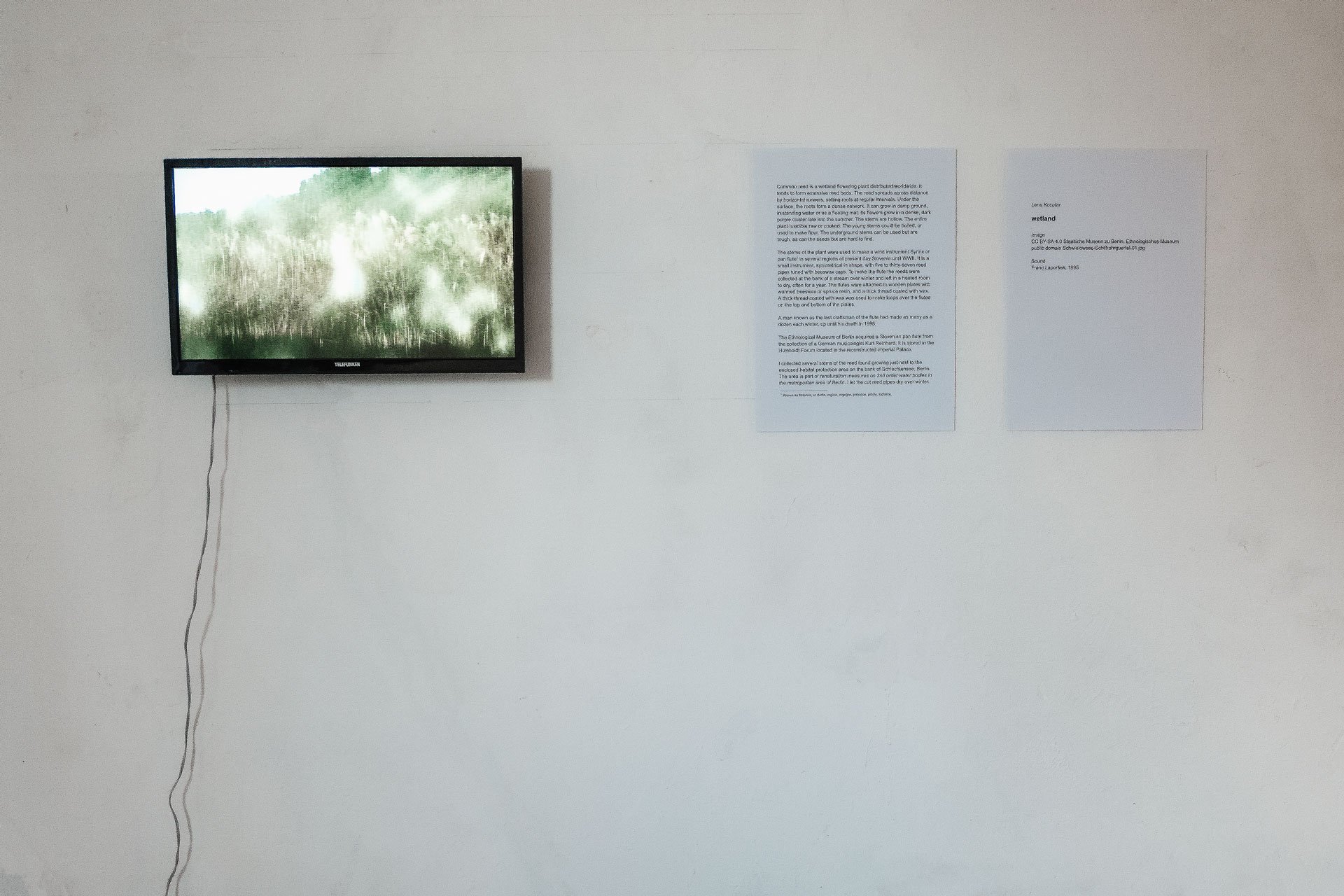Lena Kocutar
Wetland
Common reed is a wetland flowering plant distributed worldwide. It tends to form extensive reed beds. The reed spreads across distance by horizontal runners, setting roots at regular intervals. Under the surface, the roots form a dense network. It can grow in damp ground, in standing water or as a floating mat. Its flowers grow in a dense, dark purple cluster late into the summer. The stems are hollow. The entire plant is edible raw or cooked. The young stems could be boiled, or used to make flour. The underground stems can be used but are tough, as can the seeds but are hard to find.
The stems of the plant were used to make a wind instrument Syrinx or pan flute* in several regions of present day Slovenia until WWII. It is a small instrument, symmetrical in shape, with five to thirty-seven reed pipes tuned with beeswax caps. To make the flute the reeds were collected at the bank of a stream over winter and left in a heated room to dry, often for a year. The flutes were attached to wooden plates with warmed beeswax or spruce resin, and a thick thread coated with wax. A thick thread coated with wax was used to make loops over the flutes on the top and bottom of the plates.
A man known as the last craftsman of the flute had made as many as a dozen each winter, up until his death in 1998.
The Ethnological Museum of Berlin acquired a Slovenian pan flute from the collection of a German musicologist Kurt Reinhard. It is stored in the Humboldt Forum located in the reconstructed imperial Palace.
I collected several stems of the reed found growing just next to the enclosed habitat protection area on the bank of Schlachtensee, Berlin. The area is part of renaturation measures on 2nd order water bodies in the metropolitan area of Berlin. I let the cut reed pipes dry over winter.
*Known as trstenke, or dudle, orglice, orgeljce, piskulice, pišole, toplarce.
Image: CC BY-SA 4.0 Staatliche Museen zu Berlin, Ethnologisches Museum public domain Schwielowsee-Schilfrohrguertel-01.jpg
Sound: Franc Laporšek, 1995
Video Installation, 2023

